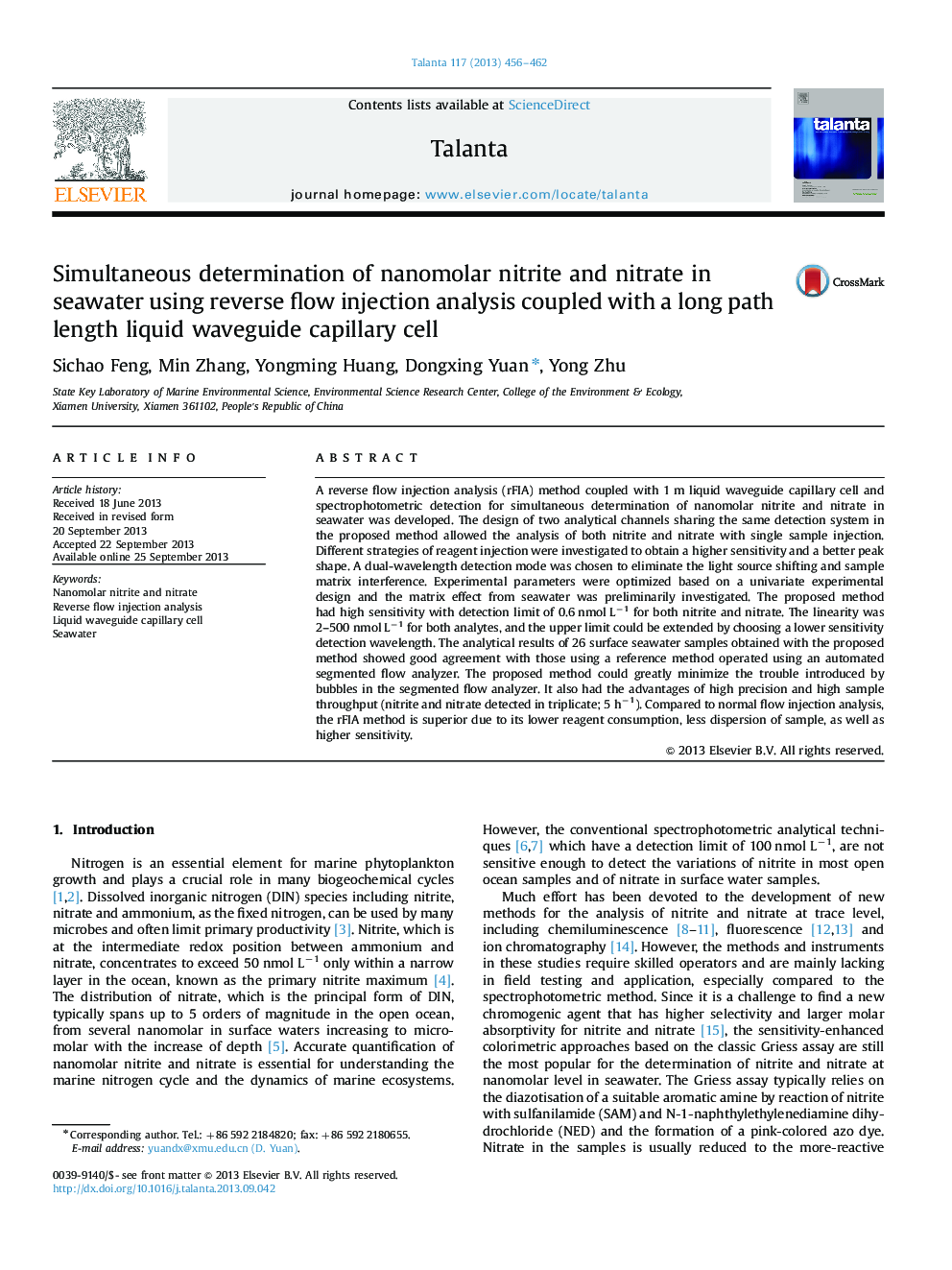| Article ID | Journal | Published Year | Pages | File Type |
|---|---|---|---|---|
| 7682388 | Talanta | 2013 | 7 Pages |
Abstract
A reverse flow injection analysis (rFIA) method coupled with 1 m liquid waveguide capillary cell and spectrophotometric detection for simultaneous determination of nanomolar nitrite and nitrate in seawater was developed. The design of two analytical channels sharing the same detection system in the proposed method allowed the analysis of both nitrite and nitrate with single sample injection. Different strategies of reagent injection were investigated to obtain a higher sensitivity and a better peak shape. A dual-wavelength detection mode was chosen to eliminate the light source shifting and sample matrix interference. Experimental parameters were optimized based on a univariate experimental design and the matrix effect from seawater was preliminarily investigated. The proposed method had high sensitivity with detection limit of 0.6 nmol Lâ1 for both nitrite and nitrate. The linearity was 2-500 nmol Lâ1 for both analytes, and the upper limit could be extended by choosing a lower sensitivity detection wavelength. The analytical results of 26 surface seawater samples obtained with the proposed method showed good agreement with those using a reference method operated using an automated segmented flow analyzer. The proposed method could greatly minimize the trouble introduced by bubbles in the segmented flow analyzer. It also had the advantages of high precision and high sample throughput (nitrite and nitrate detected in triplicate; 5 hâ1). Compared to normal flow injection analysis, the rFIA method is superior due to its lower reagent consumption, less dispersion of sample, as well as higher sensitivity.
Related Topics
Physical Sciences and Engineering
Chemistry
Analytical Chemistry
Authors
Sichao Feng, Min Zhang, Yongming Huang, Dongxing Yuan, Yong Zhu,
